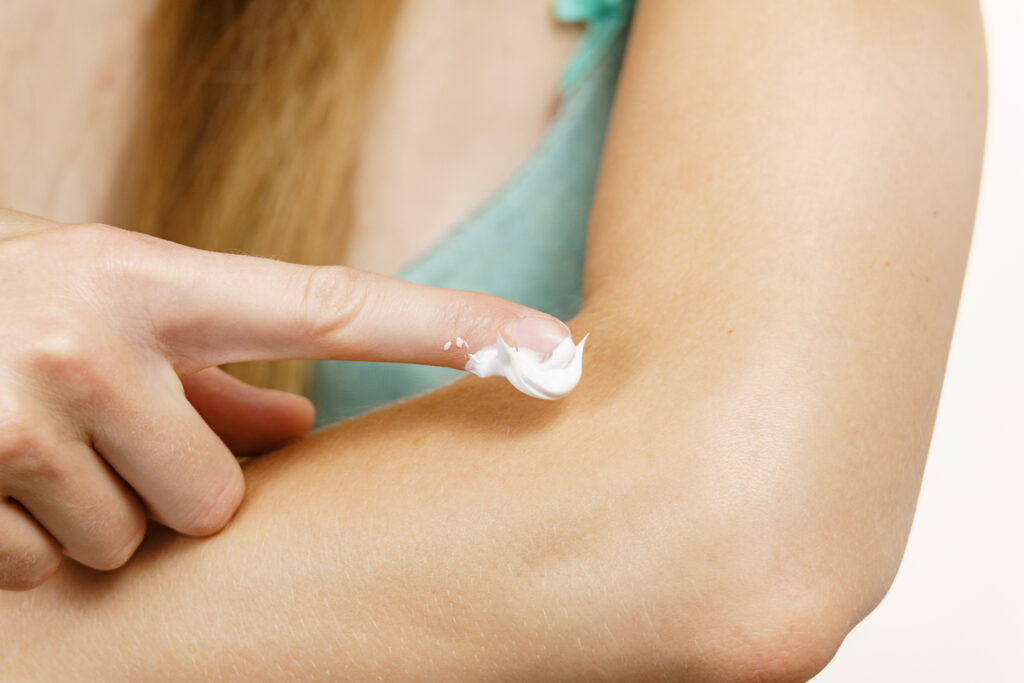Routine moisturization continues to be a fundamental aspect of atopic dermatitis (AD) treatment, regardless of the disease’s severity or presentation, but not all moisturizers are created equally.
What’s more, careful selection based on formulation and ingredients is important to reduce and prevent AD symptoms and flares.
Those are two key messages from a review on the role of moisturization in treating AD published in the March 2025 issue of JAAD Reviews.
“As a dermatologist, it’s important to focus on evidence-driven strategies for both nonpharmacologic and pharmacologic treatment modalities,” says first author Raj Chovatiya, MD, PhD, MSCI, Founder and Director of the Center for Medical Dermatology + Immunology Research in Chicago, IL, in an interview with JDNPPA. “Moisturization is a key non-pharmacologic strategy for AD treatment that should be an essential part of every treatment plan. In fact, across global guidelines, moisturization is a key element of baseline AD care for all severities of disease.”
In the review, Dr. Chovatiya and coauthor Adelaide A. Herbert, MD, Professor of Dermatology and Pediatrics at McGovern Medical School at the University of Texas Health Houston in Houston, TX, emphasize that while recent advancements in topical and systemic pharmacologic therapy for AD “is always accompanied by a risk-benefit discussion,” moisturization “is universally viewed as a safe and basic approach to address a key need across AD severities—primary correction of barrier disruption.”
Choosing the Correct Moisturizer
They provide the following considerations for choosing the correct moisturizer:
Barrier repair and hydration: Moisturizers should contain ingredients that help repair the skin barrier and maintain optimal hydration; striving for a pH between 4 and 6 is ideal. Key ingredients include ceramides, which promote barrier repair, and natural moisturizing factors like lactic acid, carboxylic acid, and urea, which enhance cellular turnover and moisture binding.
Protection and anti-inflammatory properties: Effective moisturizers should provide temporary protection to damaged skin and have anti-inflammatory properties to reduce inflammation and itching. Ingredients such as colloidal oatmeal and licochalcone A are beneficial for their skin-protectant, anti-pruritic, and anti-inflammatory effects. “Colloidal oatmeal is a well-studied skin protectant that is allowed to be listed as an active ingredient in moisturizers that claim symptomatic relief of AD under the FDA OTC Skin Protectant monograph,” Dr. Chovatiya says.
Not All Moisturizers Are Made Alike
Lawrence J. Green, MD, Clinical Professor of Dermatology at George Washington University in Washington, DC, says that patients with AD “often do not know about the importance of moisturizing their skin on at least a twice-daily basis, and even more important, what type of moisturizers are best for their skin. As their dermatologist, it is important for us to help these patients navigate the exhaustive OTC moisturizer market, as each brand has so many different types to choose from. We need to stress that not all moisturizers are made alike.”
Dr. Green adds that recommending proper moisturizers “is essential for AD, as no matter what prescription oral/injectable/topical medication is used to treat it, the damaged skin barrier of those who have atopic dermatitis will not stay healed without proper regular moisturization.”
In their review, Dr. Chovatiya and Dr. Hebert characterized the ideal moisturizer as “safe, effective, affordable, tolerable (i.e., free of irritants, allergens, fragrances, and sensitizers), formulated with the same elegance as cosmetics, and ultimately, validated to show therapeutic improvements with rigorous studies.”
—Doug Brunk


